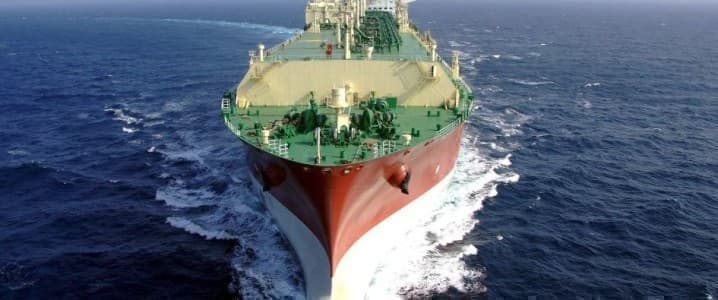Europe is nearing the end of winter with record-high levels of natural gas in storage—news that has been appropriately celebrated in the media. Yet declarations that the crisis is over appear to have been premature. Because even with this record gas in storage and much lower prices, Europeans are being told they need to continue saving gas until at least next winter.
A Brussels think tank that has gained a lot of attention for its reports in the last couple of years has come out with a new report, saying that LNG imports and gas demand cuts will be the foundation of the EU’s energy security this year.
According to Bruegel, demand for gas in the European Union needs to remain 13 percent lower than the five-year average between now and October if the EU is to hit its target of 90 percent full gas storage sites. Also, according to Bruegel, this shouldn’t have any serious adverse effects on industrial activity judging by last year.
This latter point is quite an interesting one, given that demand destruction through the closure of industrial facilities such as fertilizer plants and aluminum smelters was one big reason why the EU’s gas demand fell. And because of the closure of these facilities, some analysts are now warning of food and metal shortages.
Even Germany’s economy didn’t get out of the gas consumption cuts and demand destruction unscathed. Its economy booked a contraction for the fourth quarter of the year. While this appears to have surprised some, others forecasted it earlier in the year when the gas consumption cuts began.
Yet consumption cuts are only one-half of the equation. Sufficient supplies of liquefied natural gas will be just as essential for the EU’s energy security this year. This aspect of the situation is shaping up to be better this year than last year because of the additional LNG import capacity that is being built in Europe, notably in Germany.
This will facilitate LNG supply to Europe and will leave the price as the biggest concern of large importers. And when it comes to the price of LNG, there are suspicions that another rally is brewing as analysts expect demand from Asia to recover with China’s reopening, intensifying competition for limited supply between Asia and Europe.
Related: Everybody Loves Oil Again
In anticipation of this rally, the European Union this week announced its new LNG benchmark price based on several international prices for liquefied gas and aimed to serve as a reference point for the EU’s so-called market correction mechanism.
More commonly known as a price cap, the mechanism will be deployed if the Title Transfer Facility price for gas, Europe’s key benchmark, exceeds $196 (180 euros) per MWh for three working days, and the month-ahead TTF price is $38 (35 euros) higher than the reference price for LNG on global markets for the same three working days.
If, however, the mechanism is deployed and sellers decide not to sell gas to European buyers at capped prices, more consumption cuts would be on the table. Further cuts would need to be made if the weather this autumn and winter is not as mild as last year. The situation, then, remains quite fragile, and the EU’s success in securing enough gas for the year is uncertain.
To make matters worse, there may simply not be enough LNG to fill the EU’s gas gap. Because these storage sites that were filled to the brim last year were filled with a lot of Russian gas, and this Russian gas is now gone.
“At current demand levels, this means that Europe would need to attract 30 per cent of the global LNG market to make it safely to spring 2024,” according to the head of international equity at T. Rowe Price, Justin Thomson, who spoke to Morningstar.
Last year, the EU increased its LNG imports twofold to 123 billion cu m, Morningstar noted in a report on the bloc’s gas supply situation. A third of this came from the United States. The second-largest supplier of LNG to Europe was... Russia. In fact, Russian LNG exports to Europe increased by 50 percent last year, according to the Morningstar report.
What all this suggests is that, first, Europe’s celebration of quitting its dependence on Russian gas was premature, seeing as it still depends on it for quite a big chunk of its supply. It just doesn’t get it from Gazprom.
Second, the situation suggests that Europe is in for another year of walking a tightrope between demand and supply while juggling its own consumption, Asia’s rebound, and U.S. domestic gas demand.
Because none of these elements of the European gas supply equation are about to change in any radical way soon, especially with regard to the price of LNG as compared with pipeline gas, consumption limits could become something of a fixture in Europe.
By Irina Slav for Oilprice.com
More Top Reads From Oilprice.com:
- Russian Urals Traded At $49.48 in January, But The Kremlin Isn’t Worried
- Germany’s Largest Gas Storage Facility Can’t Store Gas
- Germany’s $2 Trillion Economic Miracle at Risk


















